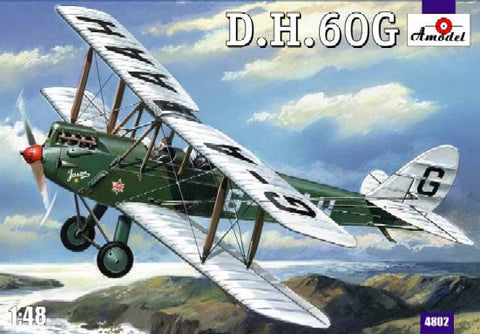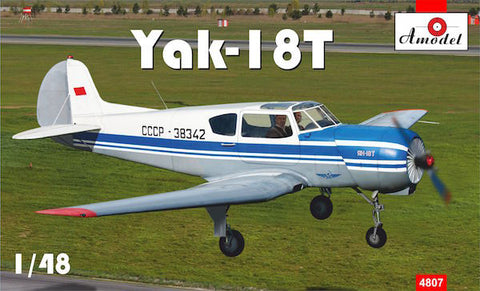
Special Hobby Aircraft 1/48 H21 Shawnee Flying Banana US Army Helicopter Kit
This Product Usually Ships In 2-3 Business Days
SHY-48062Special Hobby Aircraft 1/48 H21 Shawnee Flying Banana US Army Helicopter Kit
In 1943 the War was still raging in Europe, the Japanese were being held at bay in the Pacific and Frank Piasecki was discussing twin rotor lifting systems with the Navy's Bureau of Aeronautics (BuAer). The BuAer was already looking at the early Sikorsky helicopters as rescue aircraft, however, these crafts were severely limited in lift capacity, often barely being able to handle the pilot, fuel, and one passenger. They wanted a vertical lift aircraft that had a useful load of about 1800 pounds. The problem with Piasecki’s proposal was that no one was certain a tandem rotor system could actually fly.
In 1945 Piasecki built his first successful twin rotor system and flew it. Unfortunately, this first effort had no more useful load that the existing Sikorsky systems. Encouraged by this success he continued development of the tandem rotor system. In March of 1945, the first tandem system flew and was nicknamed the Dog Ship or sagging sausage. By June of 1948 the basic design of what was to become the H-21 series was complete and five prototypes were ordered. This new design actually exceeded the original specification with a 3000-pound useful load and by the next year, the Marine Corp was expressing interest in the craft. During the 1950s the type was in service with the Marine Corp, US Army, and US Coast Guard. Piasecki’s company was ultimately acquired by Boeing Vertol and the H-21 lead to the development of the CH-47 Chinook in the 1960s.
The CH-21 was an Air Force workhorse serving in the early years of the Vietnam war however it was slow and vulnerable to enemy fire. It was even rumored that one was brought down by a Viet Cong spear. It was powered by one Curtis-Wright R1820-103 Cyclone supercharged 1150 engine mounted in the aft fuselage. As an assault helicopter could carry 22 fully-equipped troops, in a MedEvac role it could carry twelve stretchers and two medical crewmen. A variety of attempts were made to arm the type with 12.7mm door guns, flexible chin guns and even one instance of an old B-29 remote turret being mounted under the nose. Not only was the type used by the US Armed Forces and the US Coast Guard but by the French Navy, the Royal Canadian Air Force and the West German Air Force. The French used an armed version of the CH-21 in Algeria, mounting guns in the doorways and on the skids. The type played a vital role in the development of helicopters in combat situations and was replaced by the UH-1 Huey and the C-47 Chinook.
In 1945 Piasecki built his first successful twin rotor system and flew it. Unfortunately, this first effort had no more useful load that the existing Sikorsky systems. Encouraged by this success he continued development of the tandem rotor system. In March of 1945, the first tandem system flew and was nicknamed the Dog Ship or sagging sausage. By June of 1948 the basic design of what was to become the H-21 series was complete and five prototypes were ordered. This new design actually exceeded the original specification with a 3000-pound useful load and by the next year, the Marine Corp was expressing interest in the craft. During the 1950s the type was in service with the Marine Corp, US Army, and US Coast Guard. Piasecki’s company was ultimately acquired by Boeing Vertol and the H-21 lead to the development of the CH-47 Chinook in the 1960s.
The CH-21 was an Air Force workhorse serving in the early years of the Vietnam war however it was slow and vulnerable to enemy fire. It was even rumored that one was brought down by a Viet Cong spear. It was powered by one Curtis-Wright R1820-103 Cyclone supercharged 1150 engine mounted in the aft fuselage. As an assault helicopter could carry 22 fully-equipped troops, in a MedEvac role it could carry twelve stretchers and two medical crewmen. A variety of attempts were made to arm the type with 12.7mm door guns, flexible chin guns and even one instance of an old B-29 remote turret being mounted under the nose. Not only was the type used by the US Armed Forces and the US Coast Guard but by the French Navy, the Royal Canadian Air Force and the West German Air Force. The French used an armed version of the CH-21 in Algeria, mounting guns in the doorways and on the skids. The type played a vital role in the development of helicopters in combat situations and was replaced by the UH-1 Huey and the C-47 Chinook.
- 83 parts in grey styrene
- 2 parts in clear
- 66 parts in pale yellow resin
- 1 photo-etched fret
- 2 sheets of self-adhesive masks (for canopy and wheels)
- Decals for two marking options




